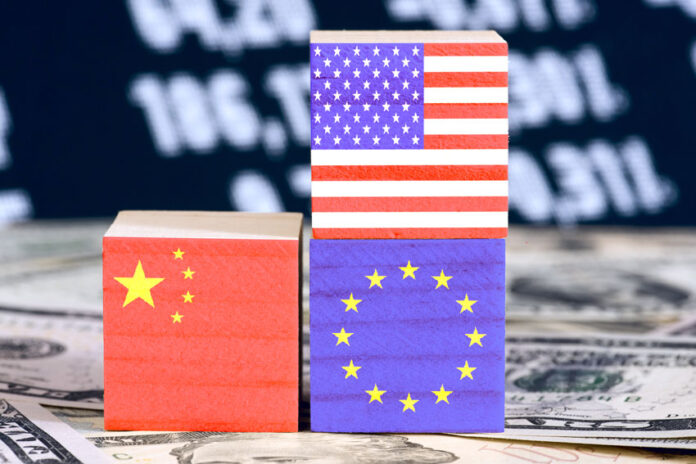This article is part of the US-China Dynamics series, edited by Muqtedar Khan, Jiwon Nam, and Amara Galileo.
For decades, scholars have written about the declining influence of the United States (US), the rise of China, and the ongoing hegemonic competition between these two global powers. The international system is undergoing a transition from the post-Cold War era of American unipolarity to a new phase. There is a debate on China’s intentions as it emerges as a superpower, how the US should respond to its decreasing relative power, and whether a Chinese-dominated international system would differ significantly from the current world order. Tensions between the US and China have escalated, evident from actions like the Trump administration’s ‘trade war,’ the Biden administration’s boycott of the 2022 Winter Olympics in Beijing, and increased military activities in the South China Sea.
Amidst this power struggle, Europe emerges as a key player that can influence international politics significantly. The European Union (EU) and the North Atlantic Treaty Organization (NATO) collectively represent a region with strong military, economic, and cultural power. The EU and the United Kingdom (UK) combined have the second-highest GDP in the world after the US. Europe’s advanced militaries, including independent nuclear capabilities, make it a vital player in the global balance of power. To challenge US dominance or establish a shared hegemony, China may need to weaken the trans-Atlantic alliance that has bolstered American predominance since World War II. Similarly, the US relies on its European allies to counter China’s growing influence.
This chapter analyzes how the US and China are vying for influence over Europe to maintain or enhance their international positions. The chapter highlights Europe’s agency and power and examines ways in which European nations may push back against the superpowers. The analysis focuses on three key areas: military, economic/technological, and governmental structure. It explores how the US and China are gaining or losing leverage over Europe and how Europe can influence these two superpowers.
Europe as a Regional Bloc
…
European Counterinfluence
Recognizing that the US and China do not influence Europe in isolation, this section explores how Europe can counterbalance American and Chinese leverage. Despite America’s military presence and China’s economic growth, Europe’s combined strength in military, economic, and soft power gives it significant influence. The deep cultural ties, historical relationships, and shared democratic values between Europe and the US contribute to Europe’s leverage over American actions. Europe’s role as a significant trading partner for both the US and China, as well as its attractiveness in terms of culture and education, further bolsters its standing in the international system.
Prospects for a Shared Influence of Europe
In conclusion, the article analyzes the potential for shared Sino-American influence in Europe and the broader implications for the international system. While the US maintains a stronger position in influencing Europe across various domains, China’s economic growth and diplomatic efforts could shift the balance over time. The possibility of Europe standing as an example of shared influence between the US and China in the international arena raises questions about the future dynamics of power relations. The article highlights the nuances of influence and counterinfluence between Europe, the US, and China, suggesting a complex interplay of interests and strategies in the global power struggle.
References






